There are a myriad of resource designed to help users of all sizes utilize drone technology in a variety of commercial applications. Events, websites, webinars and whitepapers are just a few of the formats that provide users and potential users with a better sense of how drones can enable a variety of tasks to be performed in faster, cheaper and safer ways. However, what's becoming more and more essential is to explain in great detail what those efficiencies look link for specific users or applications, and some format for doing so are better than others.
Talking through that specific detail for civil engineers is exactly what Brett Hoffstadt set out to do when he wrote Success with Drones in Civil Engineering: An Accelerated Guide to Safe, Legal, and Profitable Operations. In the book, he details what it means to build, grow, and sustain a safe, legal, productive, and profitable operation with a drone. He also identifies the major risks and concerns that drones bring into an engineering organization, discusses the key features and qualities of drone hardware and software you need to consider in your selection process and talks through what it means to sell the idea of a drone as a profitable asset. Those are just a few of the insights he shares over the course of the book though.Brett has already explained why he decided to write a book about drones for civil engineering, but we wanted to learn more about his process and discover the context around many of the insights he discusses in the book. We caught up with him to talk about his career, what kind of engineering professional the book is targeted for, why it's essential to identify the key people with an organization to run a drone operation, what he'd say to anyone who was hesitant about working through the challenges that come with drone adoption and much more. Jeremiah Karpowicz: Tell us a little bit about your background. What drove you to become a dual-degree aeronautical engineer?
Brett Hoffstadt. Photo credit: Corey Hill, Antigravity Aerial Productions
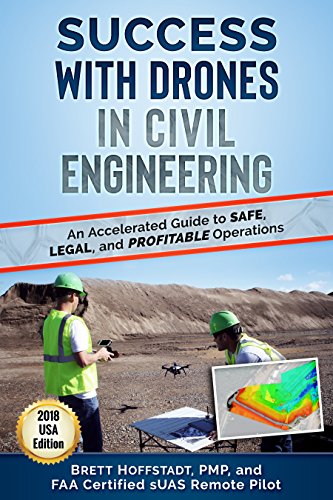 Yes, let's talk about your book, as you've previously mentioned the many resources that are available to help people sort through those challenges, but that the one you couldn’t find was a book, which compelled you to write Success with Drones in Civil Engineering. In what ways other than format is this resource different than others that are out there?Every format and resource can have its own advantages and strengths. I use and appreciate videos, podcast interviews, conferences and expos (like yours), weekly email news digests, white papers, and online forums. Those are all great for learning - and I included my recommended go-to list as an Appendix. The advantage of a book is that it gives you the space and flexibility to curate many resources together in one place. It gives you breadth.Books also provide depth. Besides dry facts and figures, it can provide narratives, nuances, and stories that make lessons more memorable.I wrote the book as if I was in the hotel lobby or bar outside of a drone industry conference, sitting next to someone who would benefit most from getting the 20% of knowledge and experience that would deliver 80% of the value. If I were sitting next to you, I would also share “inside tips” and stories. Actual numbers about costs and schedules to get a drone program started. The unique risks that most people unfamiliar with drones - or civil engineering - don’t think about. And special deals to get you some of the best equipment or services available. All of that is what you’ll find in the book. Ultimately, is this a resource that’s geared toward engineering firms that are looking to build a drone program, or to drone entrepreneurs and service providers who want to offer drone services to an engineering firm for a project?The short answer is both! One of the big questions and complexities of our young industry is the balance between outsourced drone services and building the internal capability within existing organizations. Both of them have value and tradeoffs.For civil engineers or their directors, they will benefit from a rapid crash course (no pun intended) on UAS systems, terms, and regulations. Then they can think and talk intelligently with their colleagues about drones, and be more effective if and when they seek external sources for drone service providers. Knowing a few key indicators to identify a quality operation will save tremendous time, money, and stress down the road.For drone entrepreneurs and service providers, they will get a similarly accelerated jump into civil engineering concepts and use cases. The section on project management will raise their credibility and capability when working with engineering firms because this is no time and place for amateurs or improvisation.Both groups should benefit from the third section on business success with drones. Whether you are trying to launch drone operations as a “startup” in your existing company, or you are the startup trying to sell your drone-related effort to other companies, focusing on the business value of your activity and validating the most important assumptions related to it - as quickly, inexpensively, and safely as possible - are key to success. Will civil engineers who have no familiarity with drone technology be able to get as much out of this as ones who are trying or looking to adopt the technology for themselves or their firm?I assume the reader can learn quickly. If someone is really coming into this topic “green,” there is a Glossary of essential terms and a long list of additional resources where they can go for more information on topics mentioned throughout the book. There is also a dedicated appendix for a long list of acronyms. I’ve heard from both engineers and drone operators that they really appreciate that as a resource. I’m also glad to say that your Commercial UAV News and the Commercial UAV Expo are both included in the list of essential resources! You’ve mentioned that the book is actually three books in one, so what can you tell us about how the book is organized and laid out? It was honestly a big challenge to balance my goal of getting this book published ASAP while defining the scope of what should be in it. As I collected and organized all of the must-have ingredients for the book, I saw that they naturally fell into 3 categories: systems engineering or systems thinking, project management, and business. I’m convinced that - to be truly successful with drones in a highly demanding and regulated field like civil engineering - a person needs to have thorough understanding and competency in all of these domains. Then it was fairly straightforward to put all of the elements in place within each of those sections.If people are wondering what are the key requirements and constraints with drones for civil engineering, those fall into the Systems Thinking section. There they will find not only an overview of the system architecture of a UAS but also the safety and regulatory aspects.The Project Management section steps through each of the ten knowledge areas of formal project management as they apply specifically to commercial drone operations. Anyone who is already a project engineer will gain an appreciation for the unique considerations with drones. Someone coming from the drone world will get an accelerated education into project management. If someone is looking for a way to build experience towards a project management certification, starting a drone operation in your company is a perfect opportunity to build those skills and gain credit for that experience.The Business Success section focuses on Lean Startup, marketing, sales, and networking. It’s painful to have a great product or service that nobody wants to use or buy. My experience from years of corporate innovation initiatives, online marketing, and professional sales should benefit everyone who is trying to sell the idea of drones, whether inside their own company or to others. That the book specifically addresses what it means to identify the key people to talk to and work with to run a successful drone operation seems like an especially important consideration. What kind of challenges can arise when the wrong people within an organization are pushing or pursuing the technology? Oh boy, this could be a long answer… There are many examples distilled into the book. Stakeholder management and Organizational Change Management are an art and science in themselves. I included some key concepts and tools from these disciplines in the book. One effective tool is to classify everyone based on their levels of power and influence on your drone operation. Based on where they fall in a grid of these two attributes, you should adopt different strategies to manage them. It’s a rather analytical and methodical way to approach relationships, and it works well to accelerate your plans.Another set of warning signs come from the attitudes that you learn about from studying for the FAA Part 107 FAA exam. Those are people who consistently have any of the five hazardous attitudes: machismo, impulsiveness, resignation, anti-authority, or invulnerability.Then there are the 3 C’s: the clueless, the careless, and the criminal. You don’t want any of those people in key roles within your drone program. If they are already in your organization you may have bigger problems...This is actually a great question because I have found that often the biggest challenge with adopting an innovation in a large organization isn’t the technology, it’s the people! A successful innovator and plan needs to account for that. Is the material in the book specifically relevant to operators in the United States? Are there lessons and insights related to logistics and operation that will be relevant to operators regardless of the regulatory considerations in their area? The book has been written from the perspective of someone working and operating in the USA. However, in the Additional Resources Appendix, I have included key organizations as starting points for North America, Asia, the European Union, and Australia.It is also worth mentioning that we in the United States can - and should - learn a lot from people in other countries. Many of the best examples and resources in the book come from other countries. There is a hydropower dam project in China that used drones during engineering and construction with amazing results in terms of quality, cost, and schedule. Canada and the UK are home to some leading UAS platform and service providers whose leaders are quoted in the book.Fundamentally, the principles for safe, professional, and productive operations should be the same no matter where you are. Only one chapter out of 26 is entirely limited to U.S. people and that is the chapter on Part 107 regulations. What would you say to a civil engineering professional who saw the potential of drone technology, but is hesitant about working through the logistical and regulatory challenges that come with adoption? As I say in the introduction of the book, if you took a “wait and see” approach on drones because you didn’t think it was wise to be on the bleeding edge of a new technology, you were smart in many ways. There was a lot of painful learning and costly mistakes in the past 2-5 years. The technology solutions and workflow integrations weren’t very elegant either.But a lot has changed in the past two years since Part 107 came into effect. Those who got a head start and persisted are now at a big advantage. I believe we are at an inflection point for massive industrial adoption, despite the regulatory challenges. When heavy equipment maker Komatsu announced the purchase of 1,000 DJI drones in March 2018, that signaled a wave is approaching. It is imperative for anyone who doesn’t want to be left behind to start working through their particular questions and challenges now. Fortunately, now you can benefit from the related experiences of others. It wasn’t easy to compile and condense so many of those lessons into a single resource, but that’s what people should gain in the book. Thanks for the opportunity to share my perspective on our exciting times.
Yes, let's talk about your book, as you've previously mentioned the many resources that are available to help people sort through those challenges, but that the one you couldn’t find was a book, which compelled you to write Success with Drones in Civil Engineering. In what ways other than format is this resource different than others that are out there?Every format and resource can have its own advantages and strengths. I use and appreciate videos, podcast interviews, conferences and expos (like yours), weekly email news digests, white papers, and online forums. Those are all great for learning - and I included my recommended go-to list as an Appendix. The advantage of a book is that it gives you the space and flexibility to curate many resources together in one place. It gives you breadth.Books also provide depth. Besides dry facts and figures, it can provide narratives, nuances, and stories that make lessons more memorable.I wrote the book as if I was in the hotel lobby or bar outside of a drone industry conference, sitting next to someone who would benefit most from getting the 20% of knowledge and experience that would deliver 80% of the value. If I were sitting next to you, I would also share “inside tips” and stories. Actual numbers about costs and schedules to get a drone program started. The unique risks that most people unfamiliar with drones - or civil engineering - don’t think about. And special deals to get you some of the best equipment or services available. All of that is what you’ll find in the book. Ultimately, is this a resource that’s geared toward engineering firms that are looking to build a drone program, or to drone entrepreneurs and service providers who want to offer drone services to an engineering firm for a project?The short answer is both! One of the big questions and complexities of our young industry is the balance between outsourced drone services and building the internal capability within existing organizations. Both of them have value and tradeoffs.For civil engineers or their directors, they will benefit from a rapid crash course (no pun intended) on UAS systems, terms, and regulations. Then they can think and talk intelligently with their colleagues about drones, and be more effective if and when they seek external sources for drone service providers. Knowing a few key indicators to identify a quality operation will save tremendous time, money, and stress down the road.For drone entrepreneurs and service providers, they will get a similarly accelerated jump into civil engineering concepts and use cases. The section on project management will raise their credibility and capability when working with engineering firms because this is no time and place for amateurs or improvisation.Both groups should benefit from the third section on business success with drones. Whether you are trying to launch drone operations as a “startup” in your existing company, or you are the startup trying to sell your drone-related effort to other companies, focusing on the business value of your activity and validating the most important assumptions related to it - as quickly, inexpensively, and safely as possible - are key to success. Will civil engineers who have no familiarity with drone technology be able to get as much out of this as ones who are trying or looking to adopt the technology for themselves or their firm?I assume the reader can learn quickly. If someone is really coming into this topic “green,” there is a Glossary of essential terms and a long list of additional resources where they can go for more information on topics mentioned throughout the book. There is also a dedicated appendix for a long list of acronyms. I’ve heard from both engineers and drone operators that they really appreciate that as a resource. I’m also glad to say that your Commercial UAV News and the Commercial UAV Expo are both included in the list of essential resources! You’ve mentioned that the book is actually three books in one, so what can you tell us about how the book is organized and laid out? It was honestly a big challenge to balance my goal of getting this book published ASAP while defining the scope of what should be in it. As I collected and organized all of the must-have ingredients for the book, I saw that they naturally fell into 3 categories: systems engineering or systems thinking, project management, and business. I’m convinced that - to be truly successful with drones in a highly demanding and regulated field like civil engineering - a person needs to have thorough understanding and competency in all of these domains. Then it was fairly straightforward to put all of the elements in place within each of those sections.If people are wondering what are the key requirements and constraints with drones for civil engineering, those fall into the Systems Thinking section. There they will find not only an overview of the system architecture of a UAS but also the safety and regulatory aspects.The Project Management section steps through each of the ten knowledge areas of formal project management as they apply specifically to commercial drone operations. Anyone who is already a project engineer will gain an appreciation for the unique considerations with drones. Someone coming from the drone world will get an accelerated education into project management. If someone is looking for a way to build experience towards a project management certification, starting a drone operation in your company is a perfect opportunity to build those skills and gain credit for that experience.The Business Success section focuses on Lean Startup, marketing, sales, and networking. It’s painful to have a great product or service that nobody wants to use or buy. My experience from years of corporate innovation initiatives, online marketing, and professional sales should benefit everyone who is trying to sell the idea of drones, whether inside their own company or to others. That the book specifically addresses what it means to identify the key people to talk to and work with to run a successful drone operation seems like an especially important consideration. What kind of challenges can arise when the wrong people within an organization are pushing or pursuing the technology? Oh boy, this could be a long answer… There are many examples distilled into the book. Stakeholder management and Organizational Change Management are an art and science in themselves. I included some key concepts and tools from these disciplines in the book. One effective tool is to classify everyone based on their levels of power and influence on your drone operation. Based on where they fall in a grid of these two attributes, you should adopt different strategies to manage them. It’s a rather analytical and methodical way to approach relationships, and it works well to accelerate your plans.Another set of warning signs come from the attitudes that you learn about from studying for the FAA Part 107 FAA exam. Those are people who consistently have any of the five hazardous attitudes: machismo, impulsiveness, resignation, anti-authority, or invulnerability.Then there are the 3 C’s: the clueless, the careless, and the criminal. You don’t want any of those people in key roles within your drone program. If they are already in your organization you may have bigger problems...This is actually a great question because I have found that often the biggest challenge with adopting an innovation in a large organization isn’t the technology, it’s the people! A successful innovator and plan needs to account for that. Is the material in the book specifically relevant to operators in the United States? Are there lessons and insights related to logistics and operation that will be relevant to operators regardless of the regulatory considerations in their area? The book has been written from the perspective of someone working and operating in the USA. However, in the Additional Resources Appendix, I have included key organizations as starting points for North America, Asia, the European Union, and Australia.It is also worth mentioning that we in the United States can - and should - learn a lot from people in other countries. Many of the best examples and resources in the book come from other countries. There is a hydropower dam project in China that used drones during engineering and construction with amazing results in terms of quality, cost, and schedule. Canada and the UK are home to some leading UAS platform and service providers whose leaders are quoted in the book.Fundamentally, the principles for safe, professional, and productive operations should be the same no matter where you are. Only one chapter out of 26 is entirely limited to U.S. people and that is the chapter on Part 107 regulations. What would you say to a civil engineering professional who saw the potential of drone technology, but is hesitant about working through the logistical and regulatory challenges that come with adoption? As I say in the introduction of the book, if you took a “wait and see” approach on drones because you didn’t think it was wise to be on the bleeding edge of a new technology, you were smart in many ways. There was a lot of painful learning and costly mistakes in the past 2-5 years. The technology solutions and workflow integrations weren’t very elegant either.But a lot has changed in the past two years since Part 107 came into effect. Those who got a head start and persisted are now at a big advantage. I believe we are at an inflection point for massive industrial adoption, despite the regulatory challenges. When heavy equipment maker Komatsu announced the purchase of 1,000 DJI drones in March 2018, that signaled a wave is approaching. It is imperative for anyone who doesn’t want to be left behind to start working through their particular questions and challenges now. Fortunately, now you can benefit from the related experiences of others. It wasn’t easy to compile and condense so many of those lessons into a single resource, but that’s what people should gain in the book. Thanks for the opportunity to share my perspective on our exciting times. 






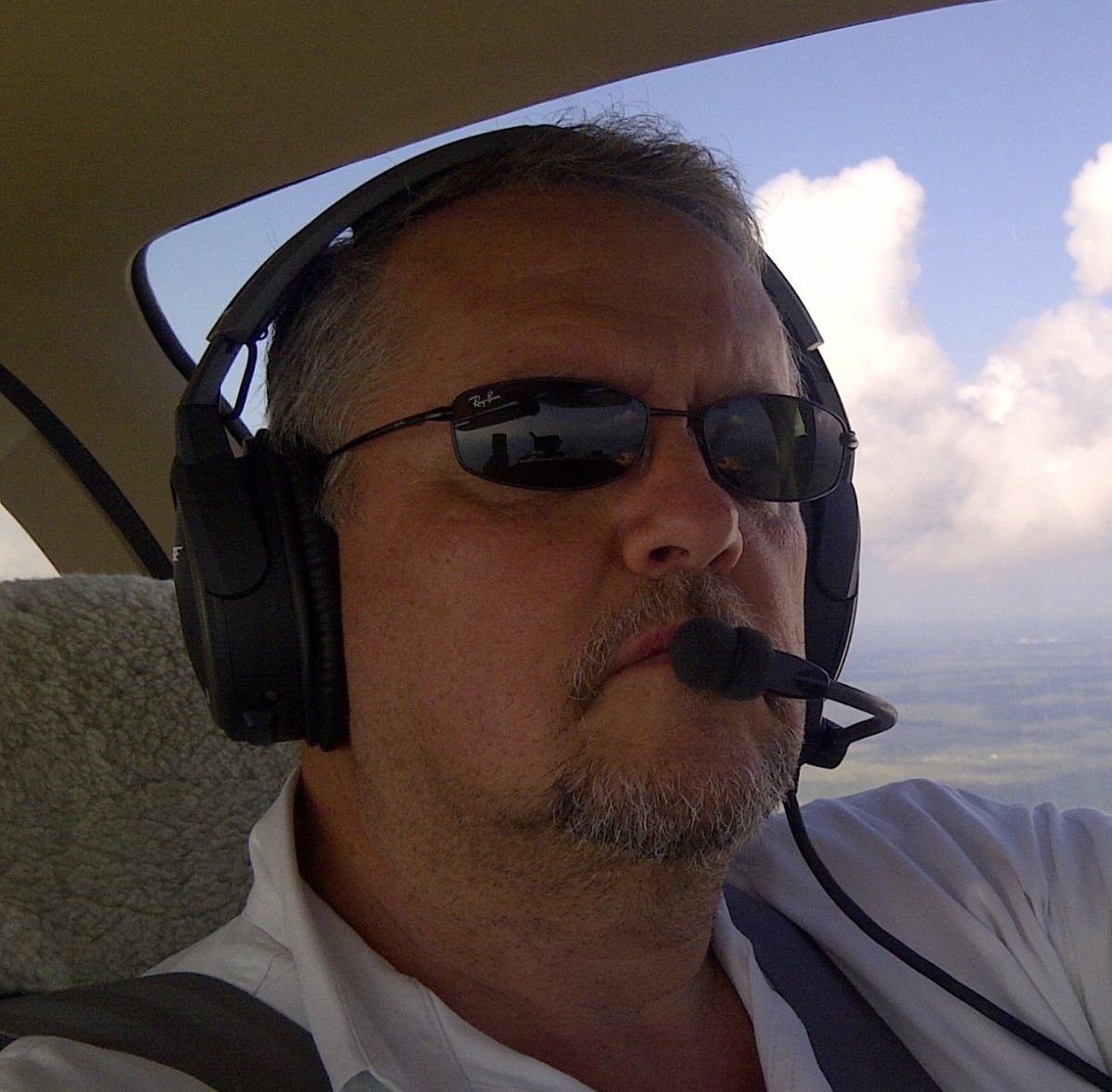





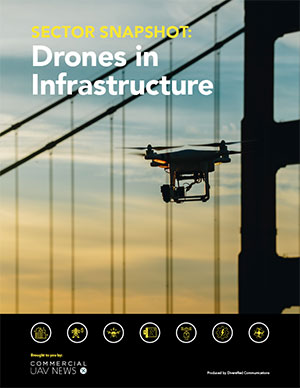
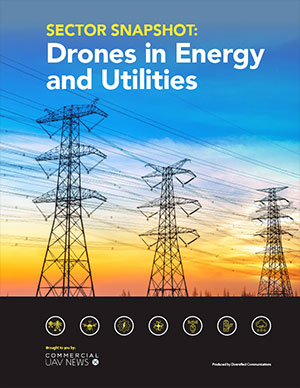
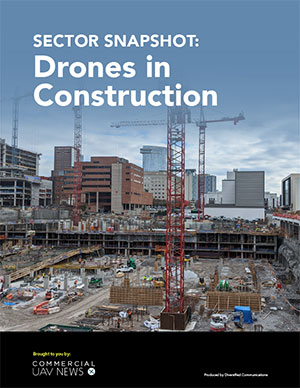
Comments